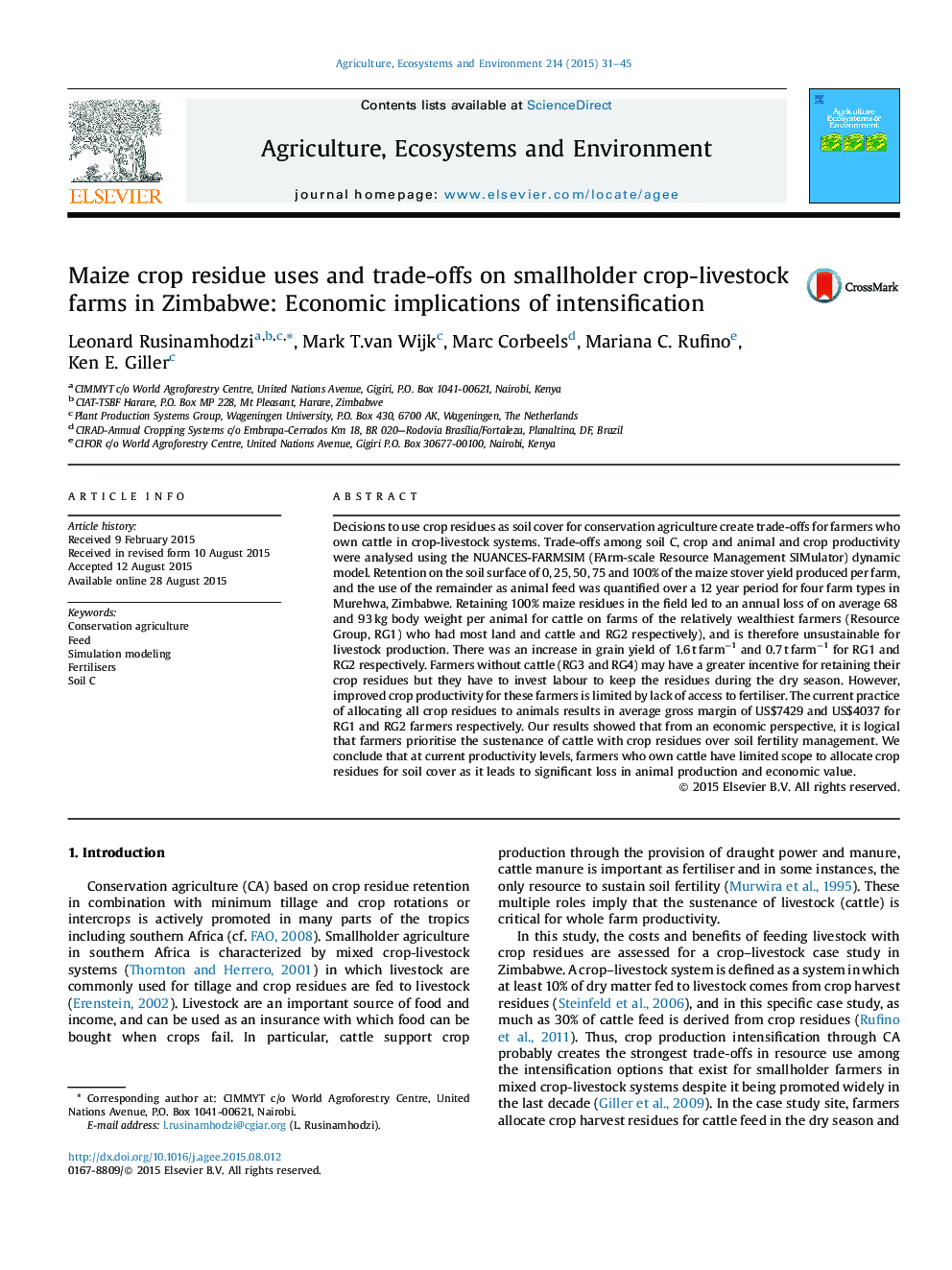| کد مقاله | کد نشریه | سال انتشار | مقاله انگلیسی | نسخه تمام متن |
|---|---|---|---|---|
| 2413609 | 1552038 | 2015 | 15 صفحه PDF | دانلود رایگان |
• Trade-offs on maize residue use were studied in a mixed crop–livestock system
• Integrating crops and livestock is more profitable than crops alone for small farms
• Retaining crop residues in the field reduces livestock feed and farm income
• Livestock owners have limited scope to retain crop residues in the field
Decisions to use crop residues as soil cover for conservation agriculture create trade-offs for farmers who own cattle in crop-livestock systems. Trade-offs among soil C, crop and animal and crop productivity were analysed using the NUANCES-FARMSIM (FArm-scale Resource Management SIMulator) dynamic model. Retention on the soil surface of 0, 25, 50, 75 and 100% of the maize stover yield produced per farm, and the use of the remainder as animal feed was quantified over a 12 year period for four farm types in Murehwa, Zimbabwe. Retaining 100% maize residues in the field led to an annual loss of on average 68 and 93 kg body weight per animal for cattle on farms of the relatively wealthiest farmers (Resource Group, RG1) who had most land and cattle and RG2 respectively), and is therefore unsustainable for livestock production. There was an increase in grain yield of 1.6 t farm−1 and 0.7 t farm−1 for RG1 and RG2 respectively. Farmers without cattle (RG3 and RG4) may have a greater incentive for retaining their crop residues but they have to invest labour to keep the residues during the dry season. However, improved crop productivity for these farmers is limited by lack of access to fertiliser. The current practice of allocating all crop residues to animals results in average gross margin of US$7429 and US$4037 for RG1 and RG2 farmers respectively. Our results showed that from an economic perspective, it is logical that farmers prioritise the sustenance of cattle with crop residues over soil fertility management. We conclude that at current productivity levels, farmers who own cattle have limited scope to allocate crop residues for soil cover as it leads to significant loss in animal production and economic value.
Journal: Agriculture, Ecosystems & Environment - Volume 214, 27 December 2015, Pages 31–45
